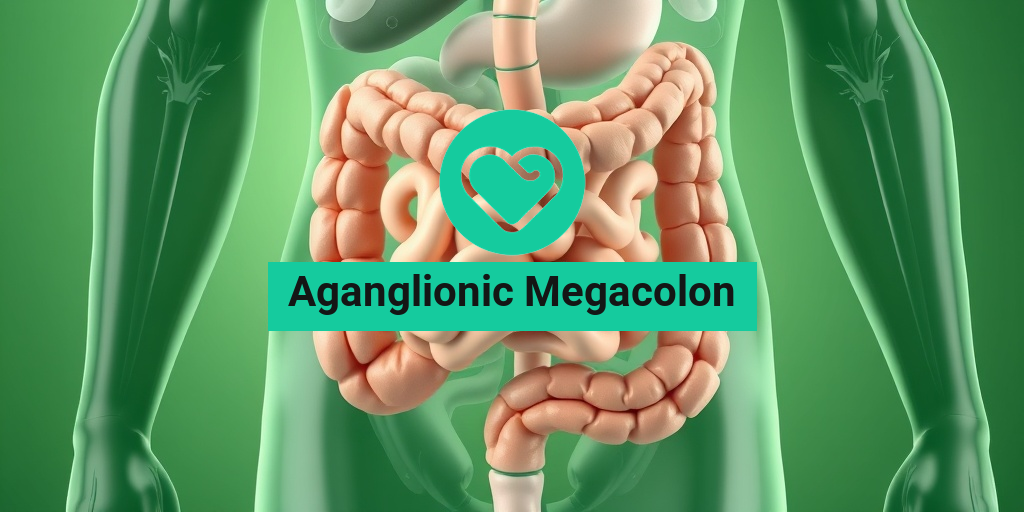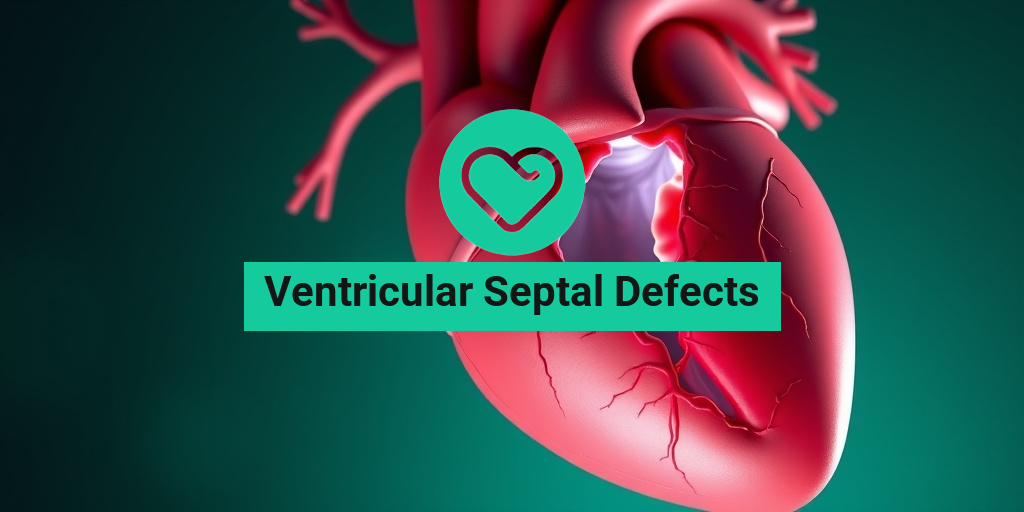What Is Aganglionic Megacolon?
Aganglionic megacolon, also known as Hirschsprung’s disease, is a congenital condition that affects the large intestine (colon). This condition is characterized by the absence of nerve cells, or ganglia, in a segment of the colon, which leads to a lack of peristalsis—the wave-like muscle contractions that move food through the digestive tract. As a result, the affected segment of the colon becomes enlarged, or “megacolon,” due to the accumulation of stool.
The Development of Aganglionic Megacolon
Aganglionic megacolon typically occurs during fetal development. The nerve cells that are missing in the colon are derived from neural crest cells, which migrate to the intestine during embryonic development. If this migration is disrupted, it can lead to the absence of ganglia in the distal colon. This condition is most commonly diagnosed in infants, but it can also present in older children and, in rare cases, adults.
Causes and Risk Factors
The exact cause of aganglionic megacolon is not fully understood, but it is believed to involve genetic factors. Some of the known risk factors include:
- Family History: A family history of Hirschsprung’s disease increases the likelihood of developing the condition.
- Associated Genetic Syndromes: Conditions such as Down syndrome and other genetic syndromes may be linked to a higher incidence of aganglionic megacolon.
Symptoms of Aganglionic Megacolon
The symptoms of aganglionic megacolon can vary depending on the age of the individual and the severity of the condition. In infants, symptoms often present shortly after birth, while older children and adults may experience more gradual onset of symptoms.
Common Symptoms in Infants
In newborns, the following symptoms may indicate aganglionic megacolon:
- Failure to Pass Meconium: Newborns typically pass meconium within the first 24 to 48 hours after birth. A delay in this process can be a significant indicator of the condition.
- Abdominal Distension: The abdomen may appear swollen or distended due to the buildup of stool.
- Vomiting: Infants may experience vomiting, which can sometimes be bilious (greenish in color).
- Constipation: Severe constipation is common, and parents may notice that their child is straining to have bowel movements.
Symptoms in Older Children and Adults
In older children and adults, symptoms may be less obvious and can include:
- Chronic Constipation: Individuals may experience long-term constipation that does not respond to standard treatments.
- Abdominal Pain: Cramping or discomfort in the abdomen may occur due to stool buildup.
- Fecal Incontinence: Some individuals may have difficulty controlling bowel movements, leading to accidents.
- Weight Loss: Unintentional weight loss can occur due to malnutrition or inadequate nutrient absorption.
When to Seek Medical Attention
If you or your child experience any of the symptoms mentioned above, it is crucial to seek medical attention promptly. Early diagnosis and intervention can significantly improve outcomes and quality of life. Healthcare providers may conduct various tests, including imaging studies and biopsies, to confirm the diagnosis of aganglionic megacolon.
For more detailed information and resources on aganglionic megacolon, consider visiting Yesil Health AI, where you can find evidence-based health answers tailored to your needs.
Understanding aganglionic megacolon is essential for managing this condition effectively. With the right support and treatment, individuals can lead fulfilling lives despite the challenges posed by this disorder. 🌟

Causes and Risk Factors
Aganglionic megacolon, also known as Hirschsprung’s disease, is a congenital condition that affects the large intestine. It occurs when nerve cells (ganglia) are absent in a segment of the bowel, leading to severe constipation and bowel obstruction. Understanding the causes and risk factors associated with this condition is crucial for early diagnosis and management.
Genetic Factors
One of the primary causes of aganglionic megacolon is genetic predisposition. The condition is often linked to mutations in specific genes that are essential for the development of the enteric nervous system. These genetic factors can be inherited, making it more likely for individuals with a family history of Hirschsprung’s disease to develop the condition themselves.
Environmental Influences
While genetics play a significant role, environmental factors may also contribute to the development of aganglionic megacolon. Some studies suggest that maternal health during pregnancy, including exposure to certain medications or infections, may increase the risk of this condition in newborns. Additionally, maternal diabetes and advanced paternal age have been associated with a higher incidence of Hirschsprung’s disease.
Associated Conditions
Aganglionic megacolon is often associated with other congenital anomalies. Conditions such as Down syndrome, Turner syndrome, and other genetic syndromes can increase the likelihood of developing this disorder. If a child is diagnosed with one of these syndromes, healthcare providers may monitor for signs of aganglionic megacolon more closely.
Demographics and Incidence
Aganglionic megacolon is more common in males than females, with a ratio of approximately 4:1. The condition is typically diagnosed in infants, but it can also present in older children and, in rare cases, adults. Understanding these demographic factors can help in recognizing the condition early and ensuring timely intervention.
Diagnosis of Aganglionic Megacolon
Diagnosing aganglionic megacolon involves a combination of clinical evaluation, imaging studies, and histological examination. Early diagnosis is vital for effective treatment and management of the condition.
Clinical Evaluation
The diagnostic process often begins with a thorough clinical evaluation. Healthcare providers will assess the patient’s medical history, including any symptoms such as:
- Severe constipation
- Abdominal distension
- Failure to pass meconium within the first 48 hours of life
- Vomiting
- Growth delays
These symptoms can help clinicians suspect aganglionic megacolon and guide further diagnostic steps.
Imaging Studies
Imaging studies play a crucial role in the diagnosis of aganglionic megacolon. Commonly used techniques include:
- X-rays: Abdominal X-rays can reveal signs of bowel obstruction and distension.
- Contrast enemas: This procedure involves introducing a contrast material into the rectum, allowing for better visualization of the colon and identifying areas lacking nerve cells.
- Magnetic Resonance Imaging (MRI): MRI can provide detailed images of the bowel and surrounding structures, aiding in diagnosis.
Histological Examination
The definitive diagnosis of aganglionic megacolon is made through a histological examination of a biopsy taken from the rectum. This biopsy will show the absence of ganglion cells in the affected segment of the bowel. The presence of these cells is crucial for normal bowel function, and their absence confirms the diagnosis.
Genetic Testing
In some cases, genetic testing may be recommended to identify specific mutations associated with aganglionic megacolon. This can be particularly useful for families with a history of the condition, as it can provide insights into the risk of recurrence in future pregnancies.
In summary, the diagnosis of aganglionic megacolon involves a comprehensive approach that includes clinical evaluation, imaging studies, and histological examination. Early detection is essential for effective management and improving the quality of life for those affected by this condition. 🩺

Complications Associated with Aganglionic Megacolon
Aganglionic megacolon, also known as Hirschsprung’s disease, is a congenital condition characterized by the absence of ganglion cells in the bowel, leading to severe constipation and bowel obstruction. While the primary concern is the inability to pass stool, there are several complications that can arise from this condition, particularly if left untreated.
1. Bowel Obstruction
One of the most significant complications of aganglionic megacolon is bowel obstruction. The absence of nerve cells in the colon prevents normal peristalsis, which is the wave-like muscle contractions that move food through the digestive tract. This can lead to a buildup of stool, causing the bowel to become distended and potentially rupture if not addressed promptly.
2. Enterocolitis
Enterocolitis is an inflammation of the intestines that can occur in individuals with aganglionic megacolon. Symptoms may include:
- Abdominal pain
- Diarrhea
- Fever
- Vomiting
This condition can be life-threatening if not treated quickly, as it can lead to sepsis, a severe systemic infection.
3. Malnutrition
Due to chronic constipation and bowel obstruction, individuals with aganglionic megacolon may struggle to absorb nutrients effectively. This can result in malnutrition, particularly in infants and young children, who require adequate nutrition for growth and development. Symptoms of malnutrition may include:
- Weight loss
- Fatigue
- Weakness
4. Psychological Impact
The chronic nature of aganglionic megacolon can also have a psychological impact on patients, especially children. The stress of frequent hospital visits, surgeries, and the inability to participate in normal activities can lead to anxiety and depression. It’s essential to provide emotional support and counseling to help manage these feelings.
Treatment Options Available
Treating aganglionic megacolon typically involves a combination of medical and surgical interventions. The choice of treatment depends on the severity of the condition and the age of the patient.
1. Surgical Intervention
The most common treatment for aganglionic megacolon is surgery. The procedure, known as a pull-through operation, involves removing the affected segment of the colon that lacks ganglion cells and connecting the healthy portion to the rectum. This surgery can significantly improve bowel function and quality of life.
2. Medical Management
Before surgery, medical management may be necessary to relieve symptoms. This can include:
- Laxatives: To help soften stool and promote bowel movements.
- Enemas: To clear the bowel and relieve constipation.
- Antibiotics: If enterocolitis is present, antibiotics may be prescribed to treat the infection.
3. Dietary Modifications
Diet plays a crucial role in managing aganglionic megacolon. A diet high in fiber can help promote regular bowel movements. Foods that are beneficial include:
- Fruits and vegetables 🍏🥦
- Whole grains
- Legumes
Additionally, staying hydrated is essential to prevent constipation.
4. Ongoing Care and Monitoring
After surgical treatment, ongoing care is vital. Regular follow-ups with a healthcare provider can help monitor bowel function and address any complications that may arise. This may include:
- Routine imaging studies to assess bowel health
- Consultations with a dietitian for nutritional guidance
- Psychological support for emotional well-being
In conclusion, while aganglionic megacolon presents significant challenges, understanding the potential complications and available treatment options can empower patients and families to seek timely intervention and improve quality of life. 🌟

Home Care and Management
Aganglionic megacolon, also known as Hirschsprung’s disease, is a condition that affects the large intestine, leading to severe constipation and other gastrointestinal issues. Proper home care and management are crucial for individuals living with this condition to maintain a good quality of life. Here are some essential strategies for managing aganglionic megacolon at home:
Understanding the Condition
Before diving into management strategies, it’s important to understand what aganglionic megacolon is. This condition occurs when nerve cells (ganglia) are absent in a segment of the colon, preventing normal bowel movements. This can lead to a buildup of stool and significant discomfort.
Dietary Considerations
A well-balanced diet plays a vital role in managing aganglionic megacolon. Here are some dietary tips:
- High-Fiber Foods: Incorporate plenty of fruits, vegetables, and whole grains into your diet. These foods help to soften the stool and promote regular bowel movements.
- Stay Hydrated: Drinking adequate water is essential. Aim for at least 8-10 glasses a day to help keep the stool soft.
- Avoid Processed Foods: Limit intake of processed and high-fat foods, as they can exacerbate constipation.
Regular Exercise
Physical activity can significantly improve bowel function. Engaging in regular exercise helps stimulate the digestive system. Aim for at least 30 minutes of moderate exercise most days of the week. Activities like walking, swimming, or yoga can be particularly beneficial. 🏃♂️
Medication Management
In some cases, medications may be necessary to manage symptoms effectively. Consult with a healthcare provider about:
- Laxatives: Over-the-counter laxatives can help relieve constipation, but they should be used under medical supervision.
- Stool Softeners: These can make bowel movements easier and more comfortable.
Monitoring Symptoms
Keeping track of symptoms is crucial for effective management. Maintain a journal to note:
- Frequency of bowel movements
- Consistency of stool
- Any discomfort or pain experienced
This information can be invaluable during medical appointments and can help healthcare providers tailor treatment plans more effectively.
Living with Aganglionic Megacolon
Living with aganglionic megacolon can be challenging, but with the right strategies and support, individuals can lead fulfilling lives. Here are some tips for navigating daily life with this condition:
Emotional Support
Dealing with a chronic condition can take an emotional toll. It’s important to seek support from friends, family, or support groups. Connecting with others who understand the challenges of aganglionic megacolon can provide comfort and encouragement. 💬
Routine Medical Check-Ups
Regular visits to a healthcare provider are essential for monitoring the condition. These check-ups can help identify any complications early and adjust treatment plans as necessary. Don’t hesitate to discuss any new symptoms or concerns during these visits.
Education and Awareness
Educating yourself and your loved ones about aganglionic megacolon can foster understanding and support. Consider reading books, attending workshops, or joining online forums dedicated to this condition. Knowledge is empowering! 📚
Adapting Daily Activities
Living with aganglionic megacolon may require some adjustments in daily activities. Here are a few suggestions:
- Plan Ahead: When going out, plan for restroom access and consider carrying necessary supplies.
- Listen to Your Body: Pay attention to your body’s signals and take breaks when needed.
- Communicate: Don’t hesitate to inform close friends or colleagues about your condition if you feel comfortable. This can help them understand your needs better.
By implementing these strategies, individuals living with aganglionic megacolon can manage their symptoms effectively and improve their overall quality of life. Remember, you are not alone in this journey! 🌟

Frequently Asked Questions about Aganglionic Megacolon
What is Aganglionic Megacolon?
Aganglionic Megacolon, also known as Hirschsprung’s disease, is a congenital condition characterized by the absence of ganglion cells in the bowel, leading to severe constipation and bowel obstruction. This condition primarily affects infants but can also be diagnosed in adults.
What are the symptoms of Aganglionic Megacolon?
Common symptoms of Aganglionic Megacolon include:
- Severe constipation
- Abdominal swelling
- Vomiting
- Failure to thrive in infants
- Diarrhea or explosive stools
How is Aganglionic Megacolon diagnosed?
Diagnosis typically involves a combination of physical examinations, imaging studies, and biopsy. Radiology can help visualize the colon’s structure, while histological analysis confirms the absence of ganglion cells.
What treatment options are available for Aganglionic Megacolon?
Treatment for Aganglionic Megacolon often requires surgical intervention. The most common procedure is a pull-through surgery, where the affected segment of the colon is removed and the healthy part is connected to the rectum. Post-surgery, patients may need to follow a specific diet to manage bowel function.
Can Aganglionic Megacolon occur in adults?
While Aganglionic Megacolon is primarily diagnosed in children, it can also manifest in adults. Symptoms may be less severe, and diagnosis can be more challenging due to the overlap with other gastrointestinal disorders.
What dietary changes are recommended for individuals with Aganglionic Megacolon?
A diet high in fiber and adequate hydration is often recommended to help manage symptoms. Foods that promote regular bowel movements can be beneficial, while certain foods may need to be avoided based on individual tolerance.
Is surgery always necessary for Aganglionic Megacolon?
While surgery is the most effective treatment for Aganglionic Megacolon, the necessity of surgical intervention depends on the severity of the condition and the patient’s overall health. Some individuals may manage symptoms with dietary changes and medication, but surgery is often the definitive solution.
What is the long-term outlook for individuals with Aganglionic Megacolon?
With appropriate treatment, including surgery, most individuals with Aganglionic Megacolon can lead healthy lives. Regular follow-ups with healthcare providers are essential to monitor bowel function and address any complications that may arise.




